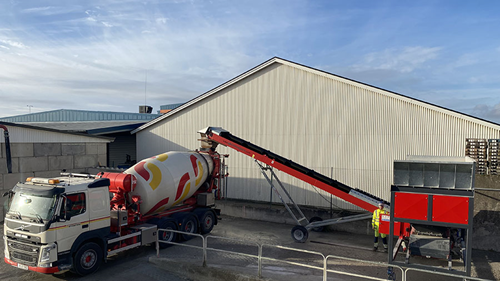

Interviews
/
7/1/2024
Customer awareness and competition drive the concrete industry towards sustainability
Ashley Walker, Key Account manager at Mapei Australia shares his view on the current trends, challenges, and innovations in the concrete industry
The Australian market strives to meet lower carbon dioxide emission objectives. Opportunities to service this particular sector will increase for companies like Mapei to develop and introduce products to enhance performance in concrete which contain higher amounts of SCM’s. Innovative products like the RE-CON line will play a key role in meeting the growing demand for sustainable concrete solutions.
What is your current position at Mapei?
I am employed as a Key Account Manager – Concrete Admixtures, a position I have held for the past five years at Mapei.
How long have you been working in the concrete industry?
I began working in the concrete industry in 1997 for BORAL as a concrete agitator driver. Almost immediately I was offered a position as a batcher where I was exposed to the chemistry of concrete and using admixtures to achieve performance objectives. In 2003 I accepted a position as a concrete plant manager for Hymix, a subsidiary of Hanson, where I was exposed to commercial concrete which required a higher degree of technical expertise. Due to those requirements, I completed a Concrete Technology course in the Engineering department at Melbourne University. So, in short, I have been working in the concrete industry for the past 25 years.
According to you, what are the current main trends in the concrete industry? Is sustainability a crucial issue for the concrete manufacturers you usually deal with?
The Australian market is becoming more attune to the demands for sustainability as many producers are beginning to become more aware of the industry trends towards a more sustainable future. Customer awareness and a necessity to compete in the market which is driven by contractual restraints to meet sustainability objectives are increasing each day. Opportunities to service this particular sector will increase for companies like Mapei to develop and introduce products to enhance performance in concrete which contain higher amounts of SCM’s as the market strives to meet lower CO² emission objectives.

What are the main factors that encourage sustainability and which obstacles are there, on the other hand, towards manufacturing more sustainable concrete?
Political demands and society in general demand that we, as a community, must protect our environment by lowering greenhouse gas emissions. Unfortunately, production of cement is within the top three CO2 emission producers in the world. Although we can reduce greenhouse gas emissions in the cement manufacturing process this also affects cement/concrete performance, more so, early age strength development and, obviously, this also impacts construction timelines. As a whole we have been trained to become impatient as the expectation is that we should be able to cure concrete faster, however, trying to justify the impact of replacement cementitious materials and the technical issues that the “new sustainable concrete” provides to developers and concrete suppliers is difficult. I like to reference that there are many examples of hydraulic binders containing pozzolanic materials that are thousands of years old and they learnt to deal with the issues. Cement production has actually turned 360° on itself and once again we must learn to not only find a solution to meet the demand, but we must also refrain ourselves to accept a lower expectation in terms of setting time.
How are the re-con line products affecting the business of mapei solutions in your market segment?
The RE-CON line of products is a step in the right direction as Mapei Australia become more prominent in the concrete market. We are currently undertaking laboratory trials for a customer in Australia who wish to add a manufactured sand to their mix. Their previous efforts have caused cracking issues with their concrete production due to the increase in fine materials to their concrete mix. Obviously, this increases water demand which in turn impacts strength and set times. Our trials are based on introducing RE-CON AGG 100 and revision of their mix designs to enable reduced water consumption and higher strength development. Our efforts so far have produced some positive results and work continues to meet the objectives for this client to hopefully obtain their business in the near future. RE-CON ZERO EVO is beginning to grow legs in Australia, especially in my market mainly due to my background in operating concrete plants as I am aware of the issues that plant operators face with handling returned concrete. The issue was getting people to understand the process and getting concrete plant operators to adopt a strategy to deal with the product. It’s a great product, and I’m really keen to see the technological advancements that Mapei have been undertaking with handling the treated concrete to make it easier for plant operators who love the idea of reselling the treated product back into their concrete. It’s a win, win for plant operators and sustainability!
What are the winning characteristics of this line according to your experience of the market? what can you expect from it in the next few years?
Any product that allows the reuse of raw materials which traditionally ended up in landfill has the trademark of winner written all over it. RE-CON ZERO is so cost effective and our customers are beginning to see the benefits of that product. THE RE-CON AGG line of admixtures is relatively new in our market. As we get to understand its benefits and find opportunities to demonstrate its effectiveness to enhance raw materials mitigated with fine or clay type materials, we can expect that sales will steadily increase as reliable sources of virgin raw materials are beginning to become less reliable or more expensive. RE-CON AGG admixtures will come to the forefront of demand by organic growth.
















